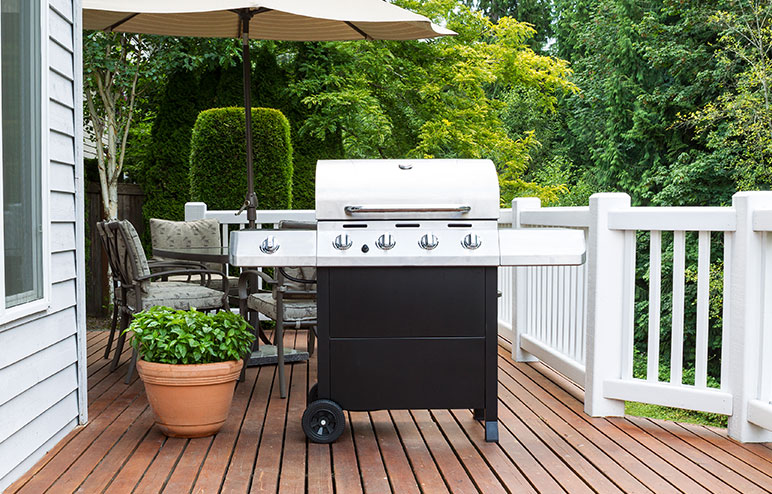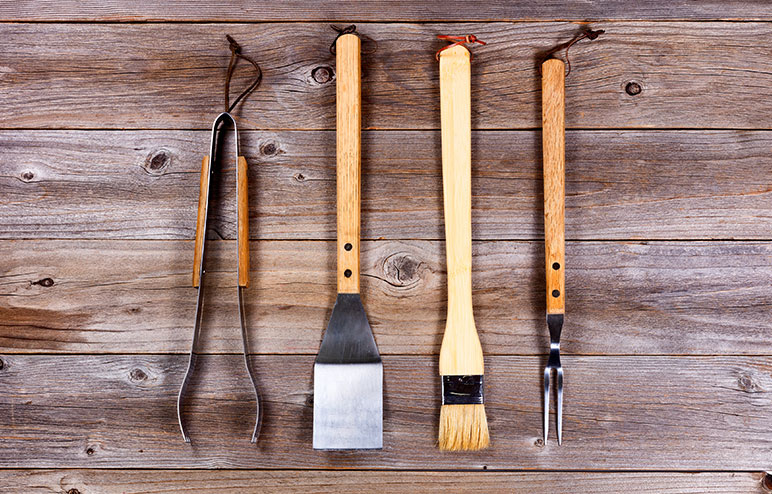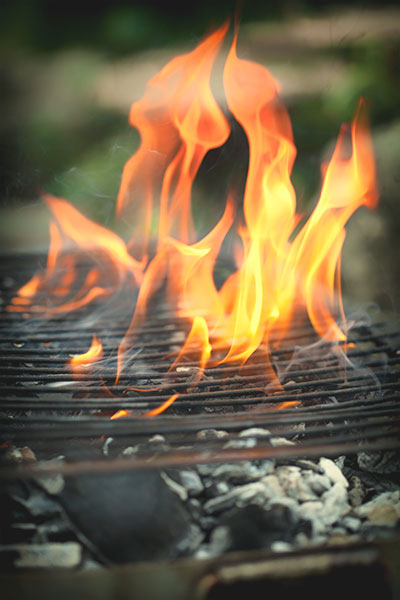Grill Safety
With more Americans lighting their grills than ever before, it’s important to remember that a fun barbecue is a safe barbecue. The following safety tips are designed to guide you through the grilling process. Remember, anytime you work with fire, there’s a chance of getting burned. So, take precautions. Common sense and planning will prevent injuries.

Read the owner's manual.
Always read the owner's manual before using your grill and follow specific usage, assembly, and safety procedures. Contact the grill manufacturer if you have specific questions. (Be sure to locate your model number and the manufacturer’s consumer inquiry phone number and write them on the front page of your manual.)
Grills are for outside, only.
Barbecue grills are designed for outdoor use, only. Never barbecue in your trailer, tent, house, garage, or any enclosed area because carbon monoxide may accumulate and kill you.
Clean your grill after each use.
Always inspect your grill prior to use to be sure it is in good condition, and not wearing down from exposure. There are a myriad of accessories grill owners can use to clean their grill grates – from metal wire brushes to cleaning blocks. Also, we strongly recommend inspecting grill grates after each cleaning to be sure no bristles stuck to the grates or any food.
Use in well-ventilated area.
Set up your grill in an open area that is away from buildings, overhead combustible surfaces, dry leaves, or brush. Be sure to avoid high traffic areas and always barbecue in a well-ventilated area. Be aware of wind-blown sparks.

Keep grill stable.
When using a barbecue grill, be sure that all parts of the unit are firmly in place and that the grill is stable (can’t be tipped over).
Follow electric codes.
If electrically-operated accessories are used (rotisseries, etc.), be sure they are properly grounded in accordance with local codes. Electrical cords should be placed away from walkways or anywhere people can trip over them.

Use long-handled utensils.
Use barbecue utensils with long handles (forks, tongs, etc.) to avoid burns and splatters.
Inspect utensils each time.
Before you grill, always inspect each utensil you're about to use to be sure it's in good condition.
Wear safe clothing.
Wear clothing that does not have hanging shirt tails, frills, or apron strings that can catch fire, and use flame-retardant mitts when adjusting hot vents.
Keep fire under control.
To put out flare-ups, either raise the grid that the food is on, spread the coals out evenly, or adjust the controls to lower the temperature. If you must douse the flames with a light spritz of water, first remove the food from the grill.

Be ready to extinguish flames.
Use baking soda to control a grease fire and have a fire extinguisher handy. A bucket of sand or a garden hose should be near if you don’t have a commercial extinguisher.
Consider placing a grill pad or splatter mat beneath your grill.
These naturally heat resistant pads are usually made of lightweight composite cement or plastic and will protect your deck or patio from any grease that misses the drip pan.
Never leave a grill unattended once lit.
Stay away from hot grill.
Don’t allow anyone to conduct activity near the grill when in use or immediately following its use. The grill body remains hot up to an hour after being used.
Don’t move a hot grill.
Never attempt to move a hot grill. It’s easy to stumble or drop it and serious burns could result.